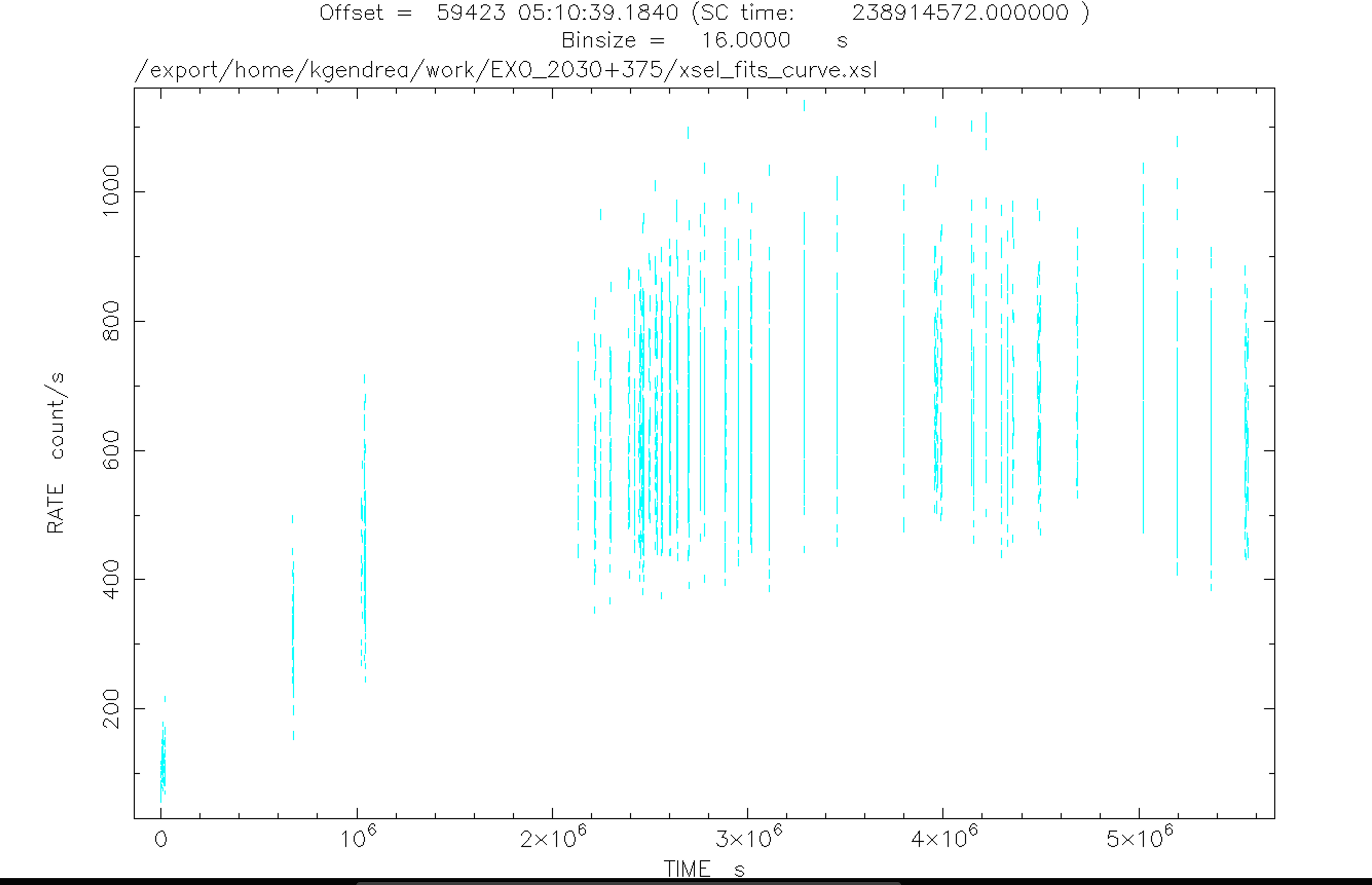NICER / ISS Science Nugget
for September 30, 2021
Neutron-Star Spin-up in a "Giant" Outburst
Every 46 days, the neutron star in the binary system known as EXO 2030+375 approaches its orbital companion, a star of type "Be", and interacts with its strong equatorial outflow, producing X-ray emission in which pulsations at the neutron star's 41-second spin period can be seen; changes to the spin rate are very modest during these regular, so-called Type I, outbursts (see, for example, the
historical record of spin frequency measurements from the Gamma-ray Burst Monitor instrument on NASA's Fermi observatory). Once every 15-20 years, however, a much stronger interaction takes place, as the companion star expels large quantities of matter, which accumulate in an accretion disk around the neutron star and ultimately flow onto its surface. The X-ray brightness increases considerably and is sustained for many weeks, until the accretion flow onto the neutron star is exhausted. The first of these Type II, or "giant," outbursts in the era of X-ray astronomy resulted in the discovery of EXO 2030 in 1985; another followed in 2006. In July of this year, EXO 2030 began another giant outburst.
NICER's ability to fully sample the initial rise in X-ray brightness was hampered somewhat by visibility constraints due to ISS structure, but a monitoring campaign was soon underway to track the evolving flux (Figure 1), its X-ray spectrum, and any changes in the neutron star's spin rate and pulse profile. The 41.33-sec pulsation was easily seen (Figure 2), and subsequent observations showed that the period is rapidly decreasing -- i.e., corresponding to faster spin -- as the star accretes matter and angular momentum. Initial NICER results have been reported by Thalhammer et al. and by Pradhan et al. in Astronomer's Telegrams #14911 and
#14931, respectively.


Figure: Left: X-ray countrate of EXO 2030+375 as measured by NICER since 28 July 2021. The large scatter in the points measured on a given day are due to the pulsations shown in the figure on the right.
Right: (Top) X-ray brightness pulsations, repeating every 41.33 seconds, representing emission from the accretion column that rotates with the neutron star. (Bottom) A power spectrum showing peaks at the fundamental frequency corresponding to the 41-sec pulsations (24.2 Hz) as well as its harmonics.
<< Previous
Main Index
Next >>